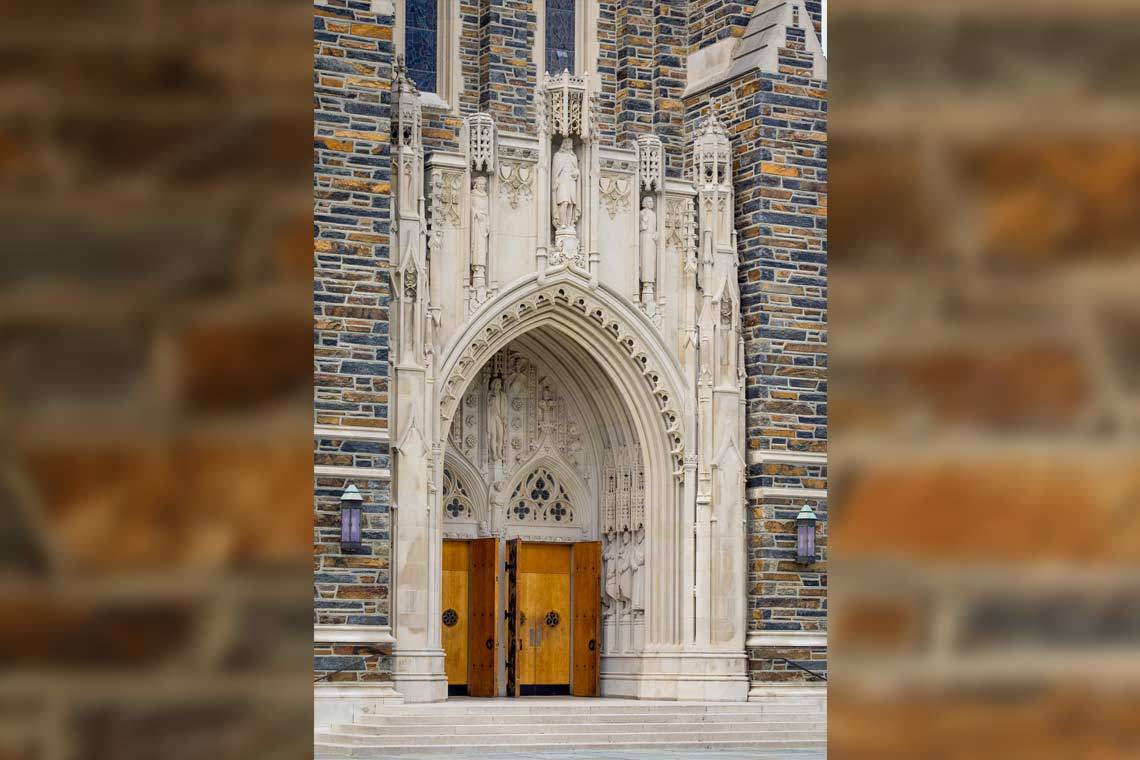The History of a Controversial Statue

As towns and campuses across the country engage in urgent public debate regarding their statues and monuments, new attention is turning to a statue on the portal of Duke Chapel that bears the likeness of a Confederate general. Documents from the Duke University Archives shed light on the history of the statue that's been considered to be the image of Robert E. Lee.
In the late 1920s and early 30s, the job of carving the limestone details of West Campus -- the gargoyles, shields and other decorations -- had been given to the prominent stone carver John Donnelly. The John Donnelly, Inc. firm had also carved the exterior on Grand Central Terminal in New York and would go on to carve the exterior of the Supreme Court Building in Washington, D.C. John Donnelly would later write in a short memoir that Horace Trumbauer, whose Philadelphia architectural firm designed Duke’s West Campus, “had become so confident of the Donnellys that he practically gave them carte blanche over all his commissions.”
In his design for Duke Chapel, Julian F. Abele, the African-American architect employed by Trumbauer, had paid tribute to the Gothic cathedrals of Europe, which often featured statues at the entrance depicting saints or figures from the Bible.
John Donnelly wrote that while he knew of this tradition, he also knew that James B. Duke had been a Methodist, so saints would be “out of place” on Duke Chapel. Donnelly appealed to the architectural firm for guidance about the subjects of the statues; Trumbauer apparently dismissed the concerns and left the sculptor to solve the problem on his own. There is no information in the University Archives about whether anyone at Duke was consulted on this question. Donnelly finally contacted a professor at Vanderbilt University, who suggested subjects “of seeming appropriateness” for Donnelly to carve.
So the new cathedral at the new university came to be flanked with statues of 10 historical figures drawn from the Protestant and Methodist traditions and from the history of the American South.
Over the doors are statues representing leaders who brought Methodism to the United States -- Thomas Coke, Francis Asbury and George Whitefield -- and over the inner arch, a statue depicting John Wesley, the founder of Methodism.
The three statues on the left depict Girolamo Savonarola, a 15th-century Dominican friar and firebrand preacher who was excommunicated and executed; Martin Luther, a leader in the Protestant Reformation; and John Wycliffe, the English theologian and reformer who translated the Bible into English. On the right are three historical figures from the American South: Thomas Jefferson, the third president and founder of the University of Virginia; Robert E. Lee, the Confederate general; and Sidney Lanier, a Southern poet and musician who died in North Carolina. None of the statues are labeled, and the names of the individuals depicted are not listed anywhere in the Chapel.
The statue of Lee in particular was not well received. Objections were made that the statue did not resemble Lee, and that the belt buckle had been wrongly carved with the initials “U.S.” (There was an attempt made to scratch the letters out, but they are still visible.) On April 26, 1932, the building committee of The Duke Endowment, which at the time made significant decisions for the university, discussed their dissatisfaction; the minutes report that “the statue of a soldier was intended to represent a wellknown Southern general but that there was no likeness in the statue to the popular conception of this person.” The minutes indicate that a letter was read from Donnelly to Trumbauer, asserting the “symbolical” nature of the representation. It was then moved and seconded that “these statues should be decorative symbolic figures, and not as representing or to be known as representing any specified person.”
In September 1932, Duke President William Preston Few and Duke Endowment trustee William R. Perkins exchanged letters about their “disappointment” over the statue. Perkins wrote on September 13, 1932, “I do not believe anybody will ever take it to be Lee.”